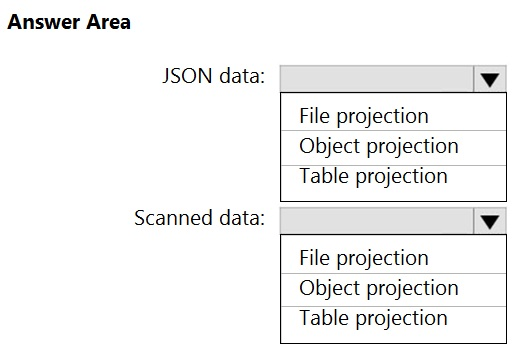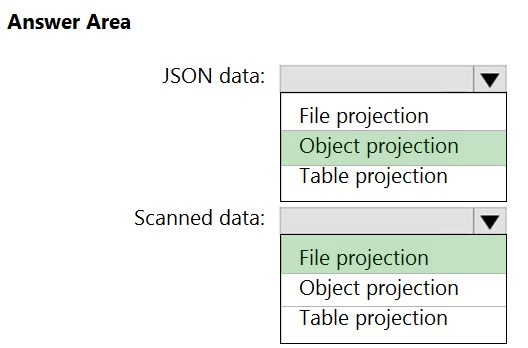Types of projections and usage
A knowledge store is a logical construction that's physically expressed as a loose collection of tables, JSON objects, or binary image files in Azure Storage.
TYPES OF PROJECTIONS AND USAGE
Projection Storage Usage
Tables Azure Table Storage Used for data that's best represented as rows and columns, or whenever you need granular representations of your data (for example, as data frames). Table projections allow you to define a schematized shape, using a Shaper skill or use inline shaping to specify columns and rows. You can organize content into multiple tables based on familiar normalization principles. Tables that are in the same group are automatically related.
Objects Azure Blob Storage Used when you need the full JSON representation of your data and enrichments in one JSON document. As with table projections, only valid JSON objects can be projected as objects, and shaping can help you do that.
Files Azure Blob Storage Used when you need to save normalized, binary image files.

